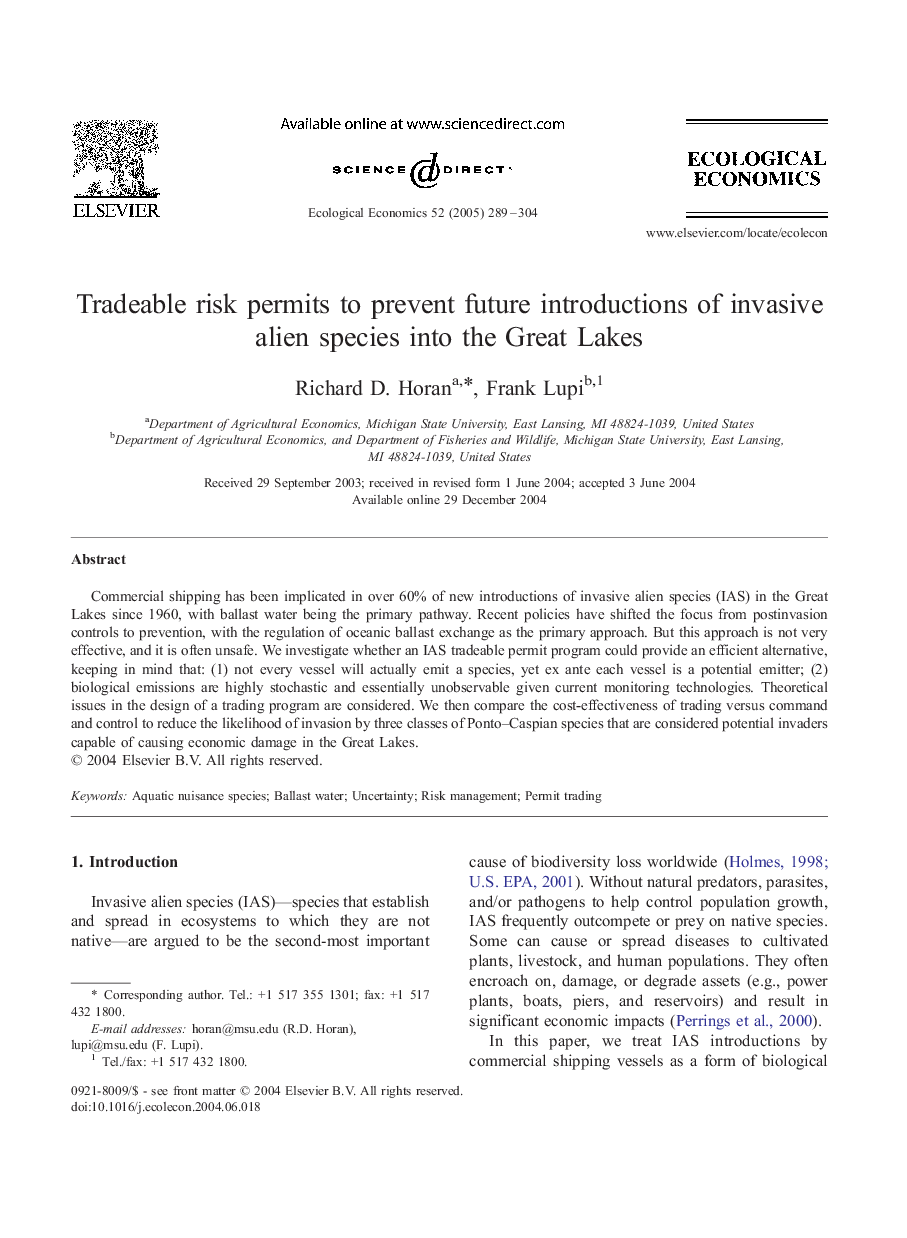| Article ID | Journal | Published Year | Pages | File Type |
|---|---|---|---|---|
| 9547825 | Ecological Economics | 2005 | 16 Pages |
Abstract
Commercial shipping has been implicated in over 60% of new introductions of invasive alien species (IAS) in the Great Lakes since 1960, with ballast water being the primary pathway. Recent policies have shifted the focus from postinvasion controls to prevention, with the regulation of oceanic ballast exchange as the primary approach. But this approach is not very effective, and it is often unsafe. We investigate whether an IAS tradeable permit program could provide an efficient alternative, keeping in mind that: (1) not every vessel will actually emit a species, yet ex ante each vessel is a potential emitter; (2) biological emissions are highly stochastic and essentially unobservable given current monitoring technologies. Theoretical issues in the design of a trading program are considered. We then compare the cost-effectiveness of trading versus command and control to reduce the likelihood of invasion by three classes of Ponto-Caspian species that are considered potential invaders capable of causing economic damage in the Great Lakes.
Related Topics
Life Sciences
Agricultural and Biological Sciences
Ecology, Evolution, Behavior and Systematics
Authors
Richard D. Horan, Frank Lupi,
